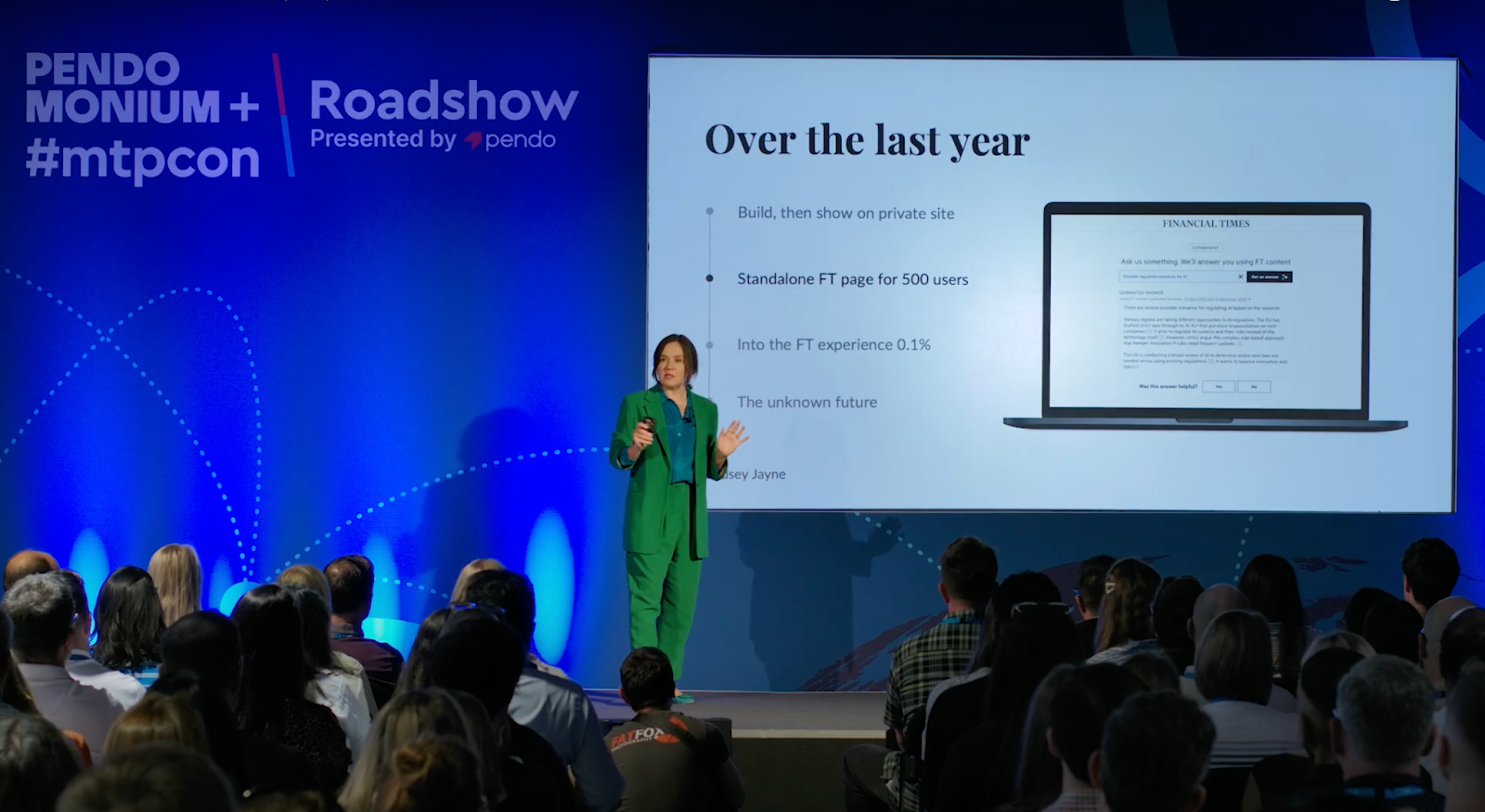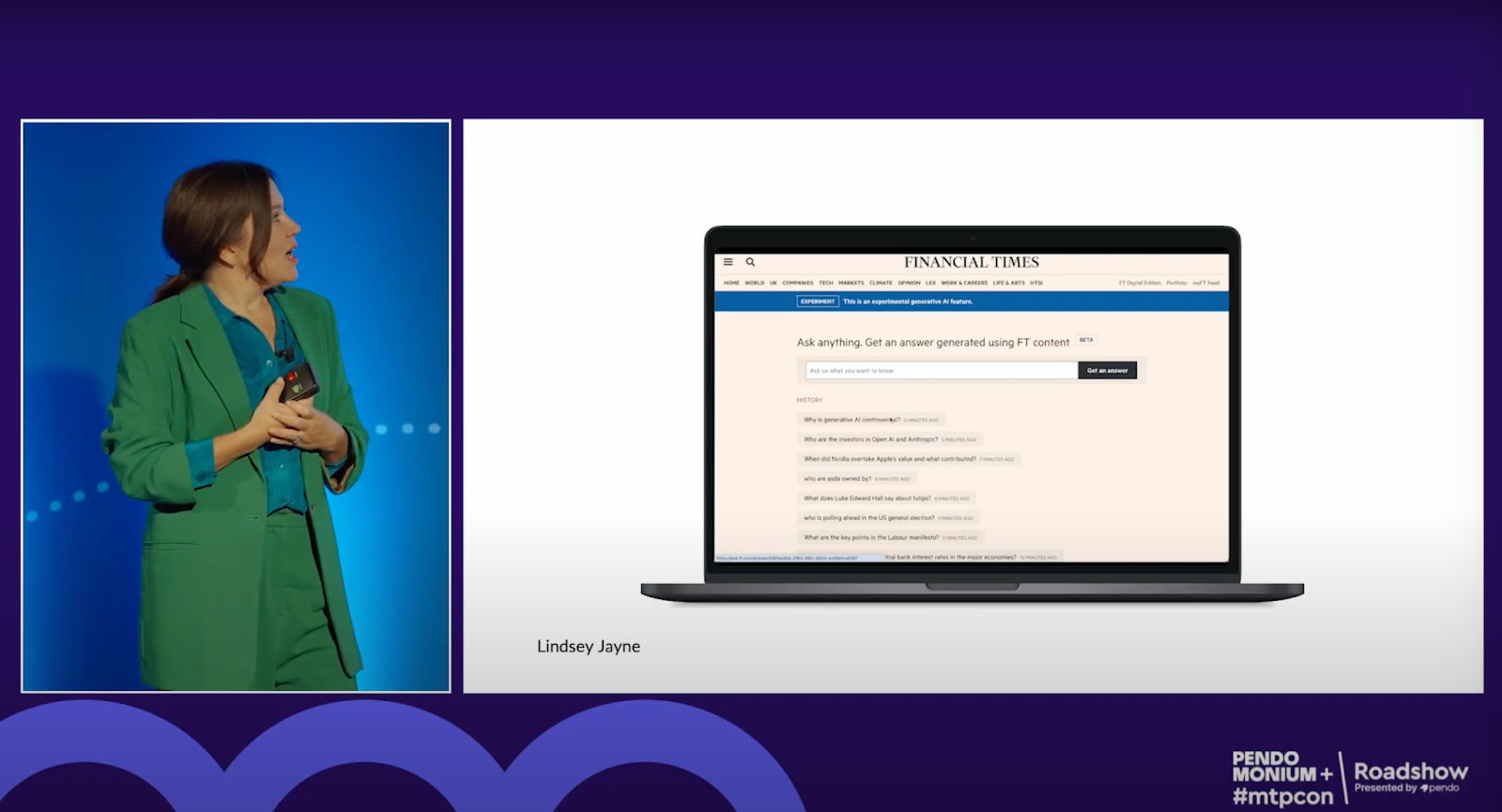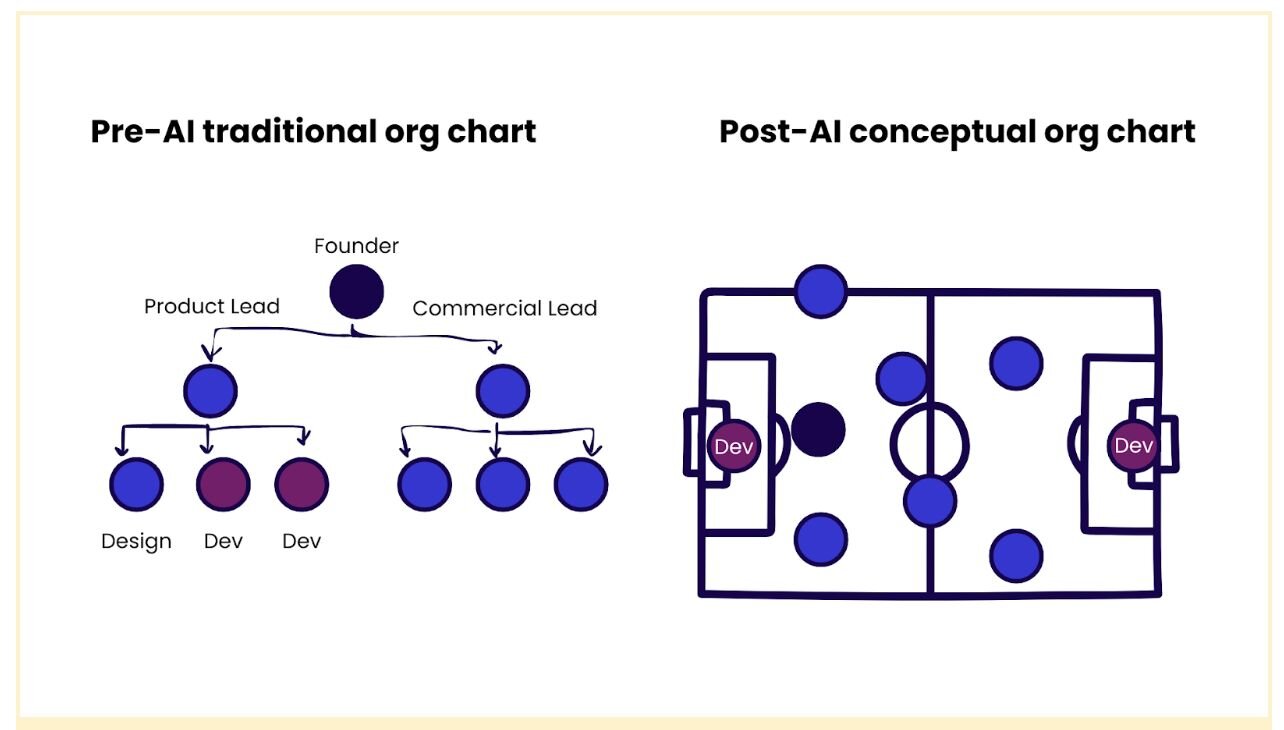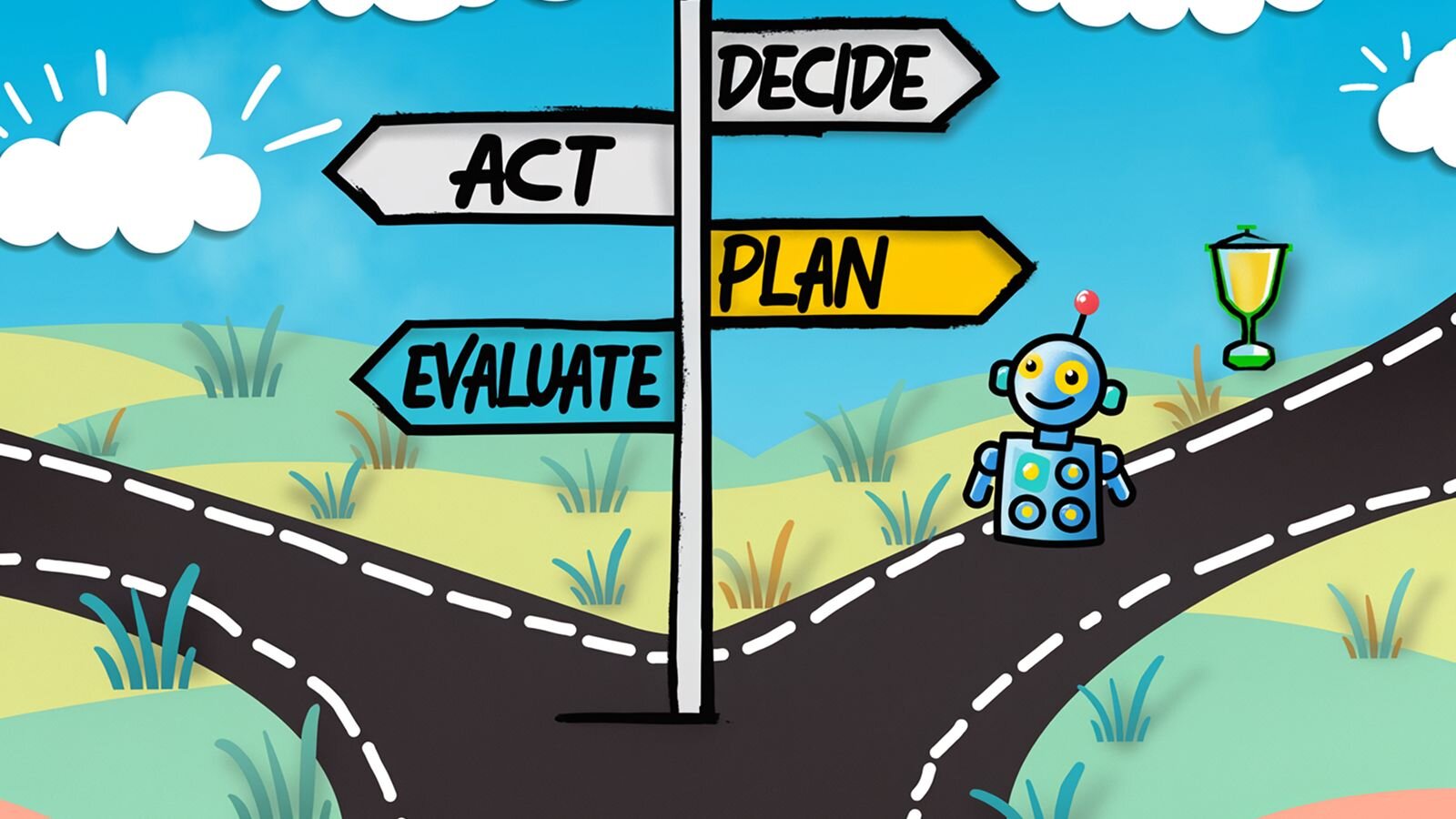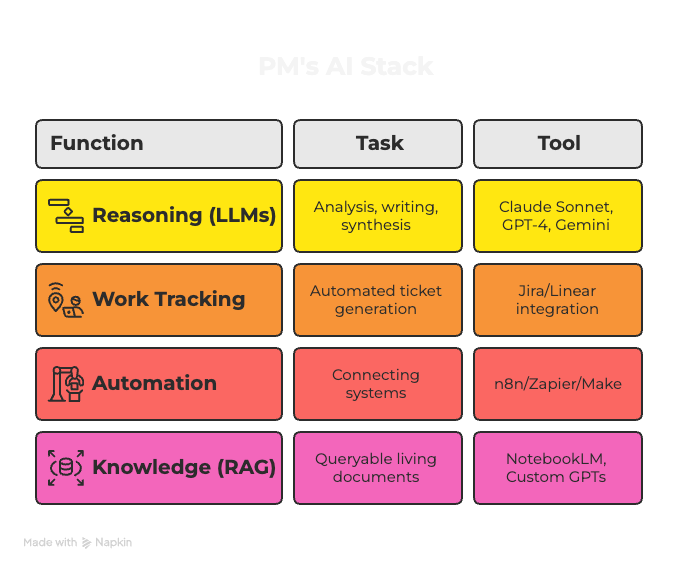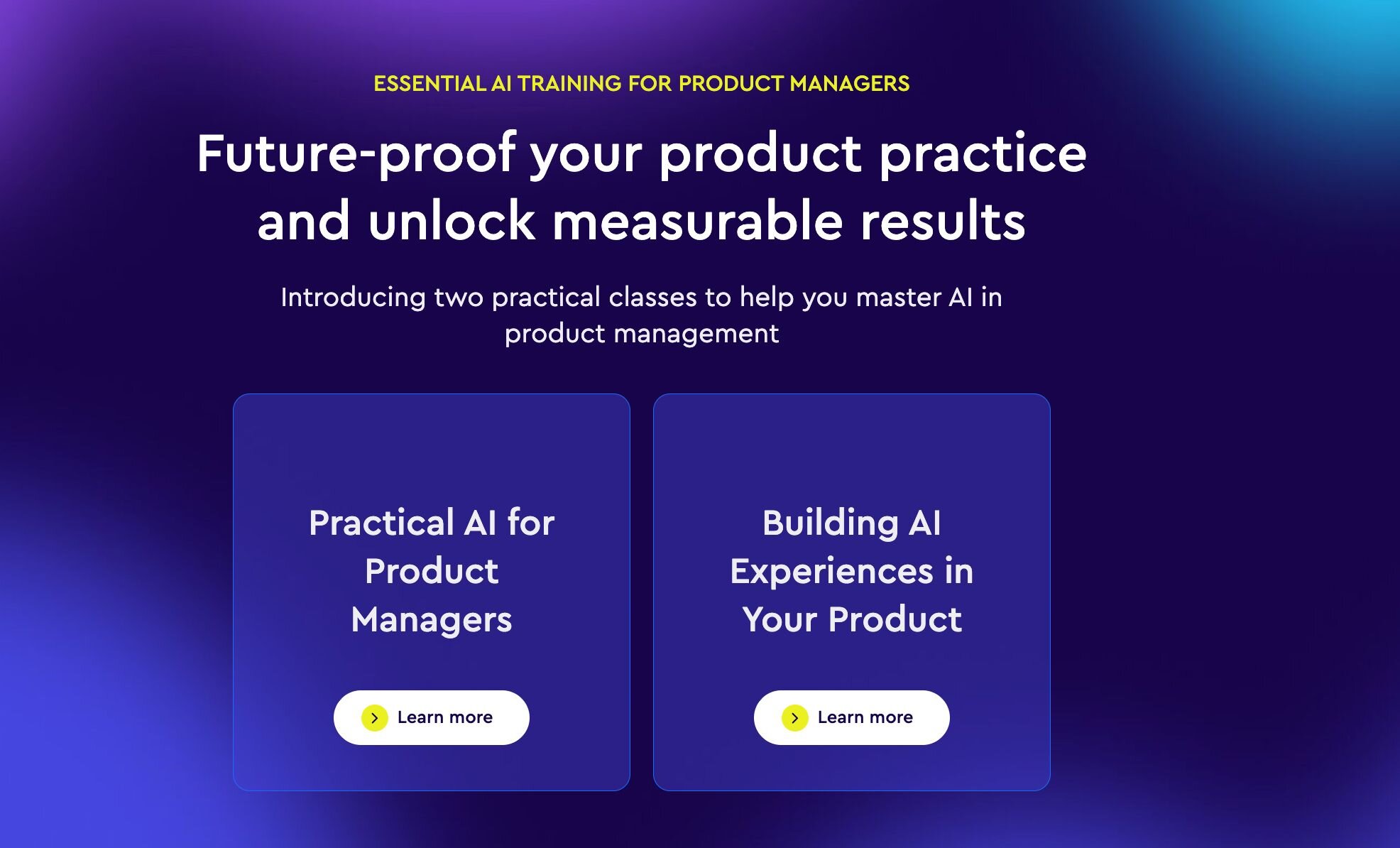At the Pendomonium + #mtpcon roadshow in London this year, Lindsey Jayne, Chief Product Officer at the Financial Times (FT), shared the company's journey of integrating AI into its product offerings.
You can now watch the full video on YouTube or read on for some of her key takeaways!
Introducing AI into the FT
“In 2023, I had one job, to get informed about AI and very fast,” Lindsey said, walking us through the increasing demand for AI integration internally.
The tool that Lindsey and her team built aimed to develop an AI tool designed to deliver personalised content based on users’ queries. The aim was to create a chatbot that would consult users on any topic based off of existing FT content.
Building this open-source model for internal FT employees was the first step to avoiding risk and protecting the data of external users. After trialling this with the newsroom, editor, and CEO, they were fully on board with the idea, which gave the product team confidence to launch it to external users.
Today, the product team is working on advancing this model, and embedding it more into user’s regular workflows and journeys to ensure that they build habits around it.
“The hard part wasn’t building the product, the hard part was evolving into an organisation that could build the product,” Lindsey explained.
It was important to ensure that the workforce was fully up to date with AI capabilities. Lindsey took the whole team through a Hackday to understand the limits of AI, what it does well, and what it can’t do. This, and off-site workshops, brought the organisation up to scratch with this new technology, and made it easier to be agnostic over what the best model is to use.
Headwinds in media
In addition to the challenges of AI, Lindsey stressed the ongoing challenges that the media industry faces, highlighting the need for evolution. She shared some key insights into the state of the media world:
- Lack of trust: Over half of consumers don’t trust news outlets
- News fatigue: 4 out of 10 people are opting out of consuming news
- Differing media outlets: People consume news in different ways – through social media, influencers, and short-form video content
- Margins: Only 8% of people in the UK pay for news, meaning that media profit margins are lower than tech companies. Consequently, the room to invest in new technologies is strained.
- LLMs: Disinformation and misinformation have become much more realistic and doable at scale, with LLMs having the capacity to write content, and create imagery from scratch.
“News is really important, we need truth. It underpins a free society,”
Lindsey said.
Product strategy was key
Reflecting on the journey the product team has been on to building its first AI tool, Lindsey explained that defining the product strategy was crucial. For Lindsey and other product leaders, product strategy has three key components:
- Diagnosis: Half of strategy is figuring out what is going on. “This has been particularly hard at the moment because no one really knows what is going on.” she said.
- Guiding policy: These are your constraints and guardrails that you work within to ensure that your product goes to market successfully and without any impediments.
- Coherent action: It’s important to have a ‘by’ at the end of every sentence, Lindsey explained, for example, ‘we’re going to dominate the UK market by…’
Where we are today and what did we learn?
Today, the FT continues to educate teams on the ethics of AI and how to leverage the full potential of the technology. Lindsey reflected on some of the key lessons learned.
Disruption is an opportunity to lay a path
A company can’t keep doing what it’s doing and continue to do well in business, she said. Recent disruptions have provided an amazing opportunity for companies to relook at how they do things. “I’ve set teams in a way that we’ve never had the mandate to before, I’ve helped to changed policies so it’s easier for our teams to build better products,” said Lindsey, “that moment of crisis is an amazing moment to do things differently.”
Strategy, ship, communicate
If you ship something without a plan, it won’t cut it when the chips are down. If you have a strategy, but don’t actually ship anything, then that’s just a LinkedIn post. Build partnerships, make things visible, and take people on the journey with your product. Strategy, ship, and communicate. It has to be all three.
“I always tell my teams that half of the job is to ship stuff, and the other half is to communicate it.”
Be curious
There have been many opportunities to upskill and understand how to do new things. Lindsey stressed the importance of experimenting well and always looking for new team structures or ways of working. “Be super informed, know what this stuff is, it’s a big deal.” she said.
With 600 product people working at the 130-year-old newspaper company, Lindsey explained that the only reason the FT has survived is because it has continually adapted and evolved. “We need informed curious product managers to be at the forefront of this technology,” she closed.
Take a look at Five things we learned at the Pendomonium+#mtpcon roadshow – Amsterdam 2024 for more insights from the roadshow and be sure to come back to the Mind the Product homepage and Pendo blog in the weeks ahead to read more recaps and full write-ups of all the roadshow talks.

